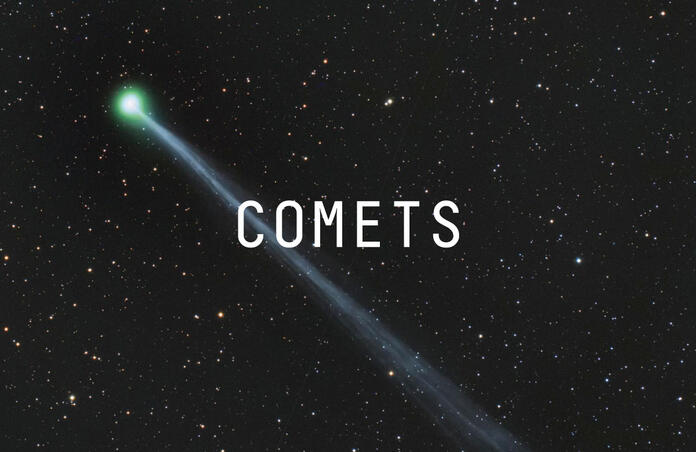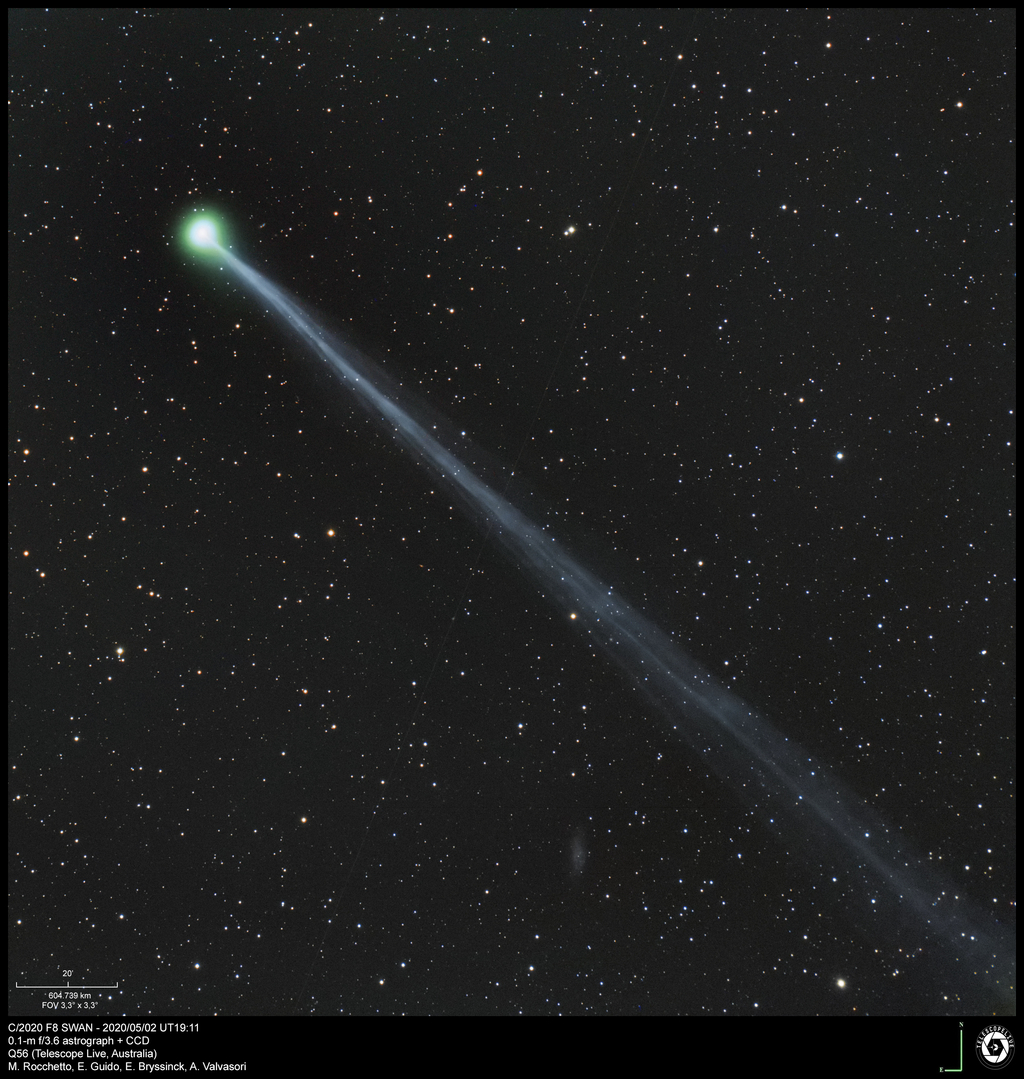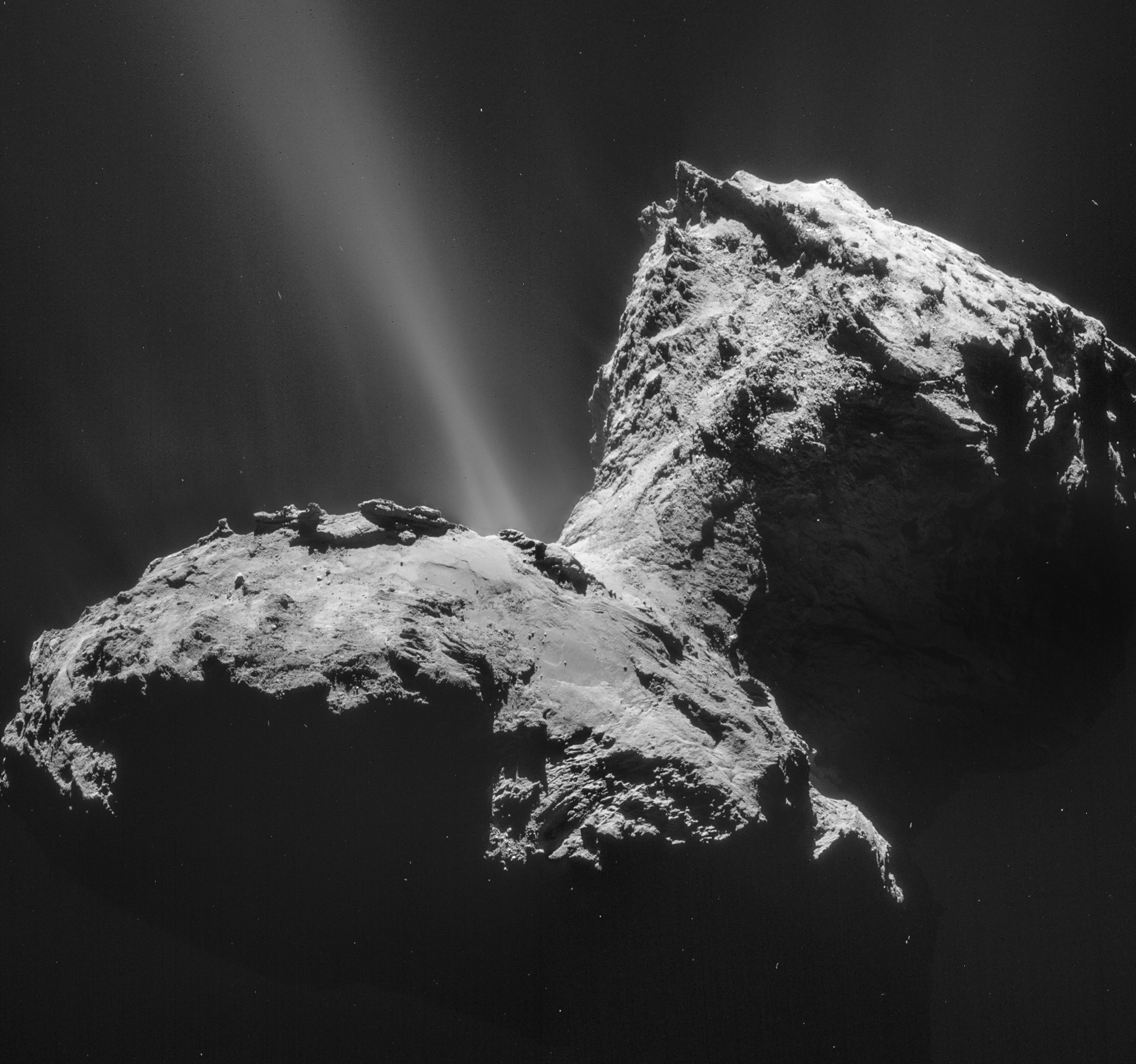What is a Comet?

In the article about asteroids, we started exploring the similarities and differences between asteroids and comets, so it’s time to learn more about the latter !
While asteroids are mostly made of rocky material, comets are mainly composed of ice and dust. This is due to the fact that while they were formed at around the same time from protoplanets’ debris, they were made further away from the Sun. In that region ices can form, i.e. elements aren’t in a liquid or gaseous phase since it is colder than in the Inner Solar System where rocky planets form. Likewise, considering that the asteroid belt is between Mars and Jupiter, the Kuiper Belt is located behind Pluto and contains a collection of different types of icy bodies, including comets but also larger objects called minor planets like Pluto.

When a comet with an eccentric orbit approaches the Sun, like NEOWISE last summer, we can see the tail comets are most famous for. Fun fact: the name comet comes from a Greek word meaning “wearing long hair”, and from the image above you can see why! This feature that comets display is a trail of vapour due to the heating up of the body; more precisely the halo of gases around the comet’s nucleus is the coma and the trail is the tail. Sometimes you can observe two distinctive tails, one of gas and one of dust, as these components react directly to the heating when the comet approaches the Sun.

As well, having a trail means that the comet loses material, however the fact that they keep coming back can be explained by a “replenishment” as they are at the furthest point of their orbit. For short-lived comets (like the famous Halley’s comet), it’s in the Kuiper Belt that they accumulate material. For long-lived comets (for example the Hale-Bopp comet) it’s the Oort Cloud that acts like a reservoir, a region even more distant than the Kuiper belt with small icy bodies.
Excitingly, comets orbiting other stars – exocomets – have already been observed by space telescopes. Still, ESA’s Philae and NASA’s Deep Impact were the only two missions which involved a landing on a comet, so their composition and properties remain somewhat uncertain. Like for asteroids, it is thought that early impacts may be linked with the emergence of life on Earth, especially as comets may have brought water to our planet. And another reason to like comets, rather than being afraid of an impact, is that when remnants from the coma fall onto the Earth, we can see a Meteor Shower, so don’t forget to look at the sky on the 17th/18th of November, when Comet Tempel-Tuttle causes the Leonids shower!
As always, you can submit an observing request on the webapp, and don’t hesitate to get in touch for further guidance! We look forward to seeing your comet observations.
Images credit:
1. Ernesto Guido, Marco Rocchetto & Adriano Valvasori, 11/04/2020 SPA-1 Telescope
2. 31/01/2015 ESA/Rosetta/NAVCAM
